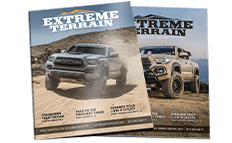2022 Ford Bronco Sport: A Aftermarket Parts and Accessory Compatibility The 2022 ford Bronco sport is a rich tapestry of automotive engineering, composed of numerous intricate parts that each serve a specific function. Understanding the complexity of these systems is crucial when considering aftermarket parts and accessories, as the compatibility, materials, and manufacturing processes vary significantly.
Engine Components
For example, engine components like pistons, valves, and cylinder heads are predominantly made from metal alloys designed to withstand high temperatures and pressures. However, lighter, thermally efficient materials like aluminum or titanium may be utilized in high-performance versions. When choosing aftermarket replacements for these parts, compatibility with the existing engine architecture is imperative. You must account for specific OEM specifications, such as combustion chamber dimensions, valve lift/duration, piston ring gaps, etc., to ensure optimal performance and longevity.
Drivetrain Components
Drivetrain parts including gears, differentials, and axles must be capable of enduring significant mechanical stress. As such, they are typically made from hardened steel, fabricated through techniques such as forging or casting. The correctness of gear ratios, spline counts, and differential types (limited-slip, locking, open) are crucial compatibility considerations. Always cross-reference with the vehicle’s specifications to ensure you're purchasing components that align with the original design.
Accessories
For vehicular accessories like audio systems, GPS modules, and interior trim, the crucial considerations will revolve around electrical compatibility and aesthetic cohesion. These components are typically made with a diverse range of materials, from durable plastics to luxurious leathers or metals, manufactured using processes like injection molding or CNC milling.
Adhering to Quality Standards
Vital to all components' performance and durability are quality standards. For critical engine or drivetrain components, these usually involve stringent inspections for dimensional accuracy, material properties, and performance under stress. Many aftermarket parts manufacturers adhere to ISO standards, TUV CERT certification, or other industry-recognized quality control protocols.
Additional Considerations
Vehicle age, mileage, operating conditions, and maintenance history play a substantial role in aftermarket part selection. For instance, if a vehicle aged with higher mileage is primarily used under harsh conditions, parts designed for heavy-duty use or those with enhanced corrosion resistance may be preferred. Conversely, a well-maintained, low-mileage vehicle might benefit from performance-oriented upgrades. Remember that while aftermarket parts can offer improvements in performance, economy, or aesthetics, they can also affect your vehicle's warranty or eligibility for certain insurance programs, thus introducing another layer of complexity to the buying decision.
















